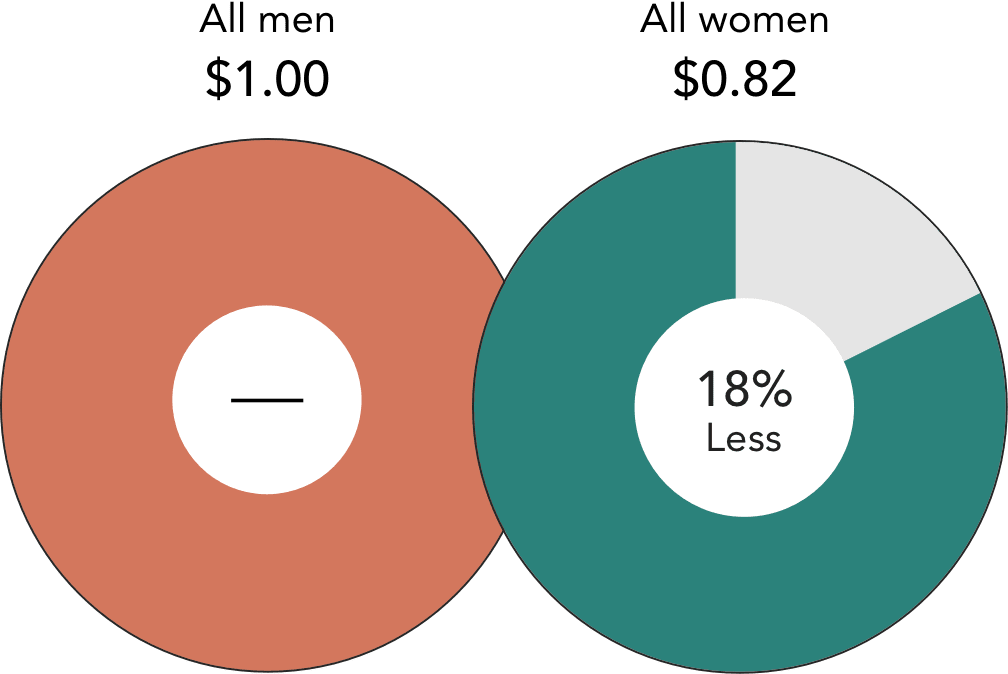A prevalent example of systemic injustice is the pay gap between women and men. This systemic sexism can also be considered systemic racism because women of color are being punished even more. On average, women in the United States are paid eighty-two cents for every dollar paid to men. Women of color are paid even less with Latinx women being paid fifty-four cents, Native American women fifty-seven cents and black women sixty-two cents on the dollar of a white man. This leads to women losing nearly half a million dollars over the course of their career and women of color losing nearly one million. This has a huge impact on women, especially women of color. About fifty-one percent of Latinx women and forty-eight percent of Black women do not have enough money to pay for basic needs such as food and housing. “Over forty-five percent of women do not even have three hundred dollars in their savings compared to only twenty-seven percent of men” (Livingston). When women are earning less this also has a negative effect on their families. Their children are more likely to grow up in poverty and as a consequence they are more likely to have poor health, behavioral problems, do poorly in school and end up poor themselves. Some ways we could approach fixing this problem could be with pay transparency, more flexible work schedules, more child care options, integrating women into male dominated fields, stronger labor unions and more family-friendly policies ,such as paid sick days, paid parental leave, and protecting caregivers. This example of systemic injustice shows how sexism and racism is still very much in play in today’s economy/society.


This example can be considered a systemic injustice because it is prevalent throughout the entire job industry in the United States, not just a few individual businesses or individuals targeting women.
This shows how women are still considered an “other” in today’s society, especially women of color. This example of systemic injustice particularly relates to Simone de Beauvoir’s theory of the “one” and the “other” in The Second Sex. Her theory that men fundamentally oppress women and treat them as the “other” is clearly shown in the pay gap between men and women.
“Gender and Racial Inequity during Crisis: The Pay Gap.” TIME’S UP Foundation, 30 July 2021, timesupfoundation.org/work/times-up-pay-up/gender-and-racial-inequity-during-crisis-the-pay-gap/.
https://www.moneycrashers.com/gender-pay-gap-inequality-effects/
Author: Amy Livingston
The wage gap is something that many people believe have completely disappeared, but it is still very prominent! I think it is really interesting how not only it is different between genders but also between races. That seems really obvious, but I never really thought about the wage gap as something racial until now. It goes much further than just women’s rights, it is about every single person being paid the same amount for doing the same job. Great work!